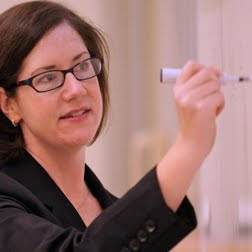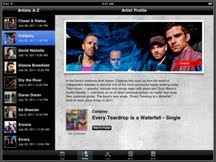
After reading the two-part post on Sharing: It's Not Influence (Part 1, Part 2), a few people asked for alternatives. There are several, but one stands out among the rest.
Stop looking for influencers. Start making influencers.
Earlier this year, I wrote a post about how influencers tend to be the most influenced. Some mistook that post, Flipping The Scale: Influencers Are The Most Influenced, as influencer bashing. Maybe it was, but just a little bit. There was a bigger intent within the topic.
First, let's define "influencers" for what they really are to avoid any confusion. Online, the most common definition is "active people with big networks that seem reasonably engaged." That's it. There is nothing more to it. There doesn't even have to be any evidence to suggest that they have influenced anyone. It's about numbers.
With that understanding, the most common trait among these influencers is that they are always asking for advice, help, opinions, and ideas. Sure, sometimes it's a ruse. I recently read a thread from one who asked for advice on writing bios and then praised some pretty paltry advice that wasn't worth the bandwidth. I don't suspect the influencer had any intention of ever using any of it, but that's not the point.
Asking attracts more attention in less time than pitching egos.
I'm not suggesting that all "influencers" use the tactic for mass deception nor am I suggesting they be devalued. Some are sincere when they ask questions and then reflect crowd-sourced answers back at the people who provide them.
Other times, they listen to what people are asking elsewhere and then provide an answer, creating the impression of clairvoyance. (And yes, a few borrow what other people are saying and claim it as their own idea.) But despite the less desirable attributes, there are a few who are more authentic. It all depends on the person, not groups of people with the same moniker.
 That said, the real work that needs to be done is to identify, ask, and engage people who are passionate about a topic. Those people, in turn, provide the answers. The "influencer" then has an opportunity to praise the network, collate the material, and maybe piggyback their message onto the whole mashup (sometimes with credit and sometimes without).
That said, the real work that needs to be done is to identify, ask, and engage people who are passionate about a topic. Those people, in turn, provide the answers. The "influencer" then has an opportunity to praise the network, collate the material, and maybe piggyback their message onto the whole mashup (sometimes with credit and sometimes without). Everyone asked, especially those included in any answer, are now engaged, vested, and likely to promote the outcome.
Ergo, the influencer isn't really influencing anyone. The influencer is making a network of passionately engaged influencers, people who hope to have an impact on the person, place, or project. That's all there is to it. Be the influencee, not the influencer (even if it is in perception and not reality).
Stop looking for influencers. Start making influencers.
Anybody can become an influencer, at least by the standards of the current obscure and erroneous definition, because anyone can be an influencee. It's not even a new idea. This has been occurring offline since the beginning of time — everyone is all ears for the person compiling the report that they contributed to.
It's also why most "influencers" fall in and out of favor over time. It's human nature to overreach and, sooner or later, most of them overreach. They stop asking and start talking, or even more inexplicably, start charging people to hold up the mirror.
To be clear, I don't mean to make it sound as dubious as it can be. There are authentic uses for this technique. As long as a company is willing to accept some ideas from a growing network, support passionate advocates, and make it easier for those with an interest to make contributions and be elevated as an "influencer," it's all good.
It takes a significant amount of time, energy, and empathy. But it's also a key component of every successful campaign I've ever worked on. I shared a partial case study a couple years back when I retired the deck Shaping Public Opinion. If you look at the deck, you won't find what I really hope you come away with.
I didn't influence 250,000 bloggers and 15,000 journalists to cover AIDS and reach 62.5 million readers (it was even bigger for human rights). They convinced themselves.
My job, along with my teammates on that campaign, was to make it easier for them to do it. So we never wasted time begging "influencers." We made it easier for passionate people to do what they wanted to do, making them influencers.











































